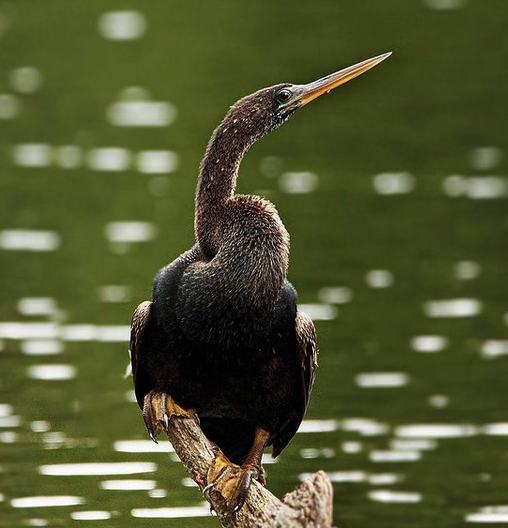Here’s a bird I was really happy to find during a recent birding trip to southeastern NC, an Anhinga!
In fact I got lucky and was able to spot two of them (an immature and an adult) on the ponds at Airlie Gardens in Wilmington.
Although I’ve seen this species before, these are the first photos I’ve ever captured of this large, prehistoric looking bird.

Anhingas are actually a species that is on the increase here in the Tarheel State. They favor habitats containing freshwater with cypress trees and are most often spotted hunting for a meal in swamps, ponds and lakes in the coastal plain and in the eastern Piedmont regions.




As you may have guessed, Anhingas eat a wide range of aquatic creatures such as fish, crayfish and frogs. They often dive underwater to catch their prey. Using their sharp bills, they impale their prey by piercing it straight through.
Interestingly they’ve evolved with some unique ways to hunt underwater more efficiently.
For one, they lack the water proofing oils found in duck species. Since (surprisingly) they’re not the strongest swimmers, they become waterlogged once their feathers become saturated. This added weight allows the Anhinga to dive deeper than it could if it was waterproof.
Another cool feature of the Anhinga is that they do not have nostrils. This adaptation means they’ve got no worries about accidentally breathing in water while hunting below the surface.
It’s neat that a bird that looks like it belongs in the Jurassic Period would actually be the one species which is holding the latest in cutting edge freshwater hunting physiology, lol!
Photos by @sally_siko of @birdwatching_nc on the full frame beast of an SLR, the mighty @canonusa
#5Ds
